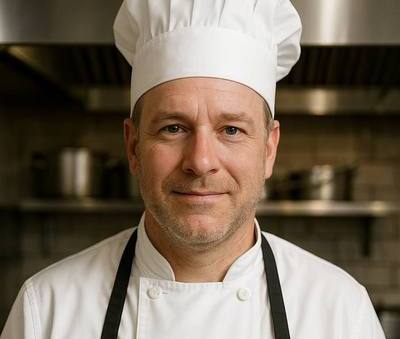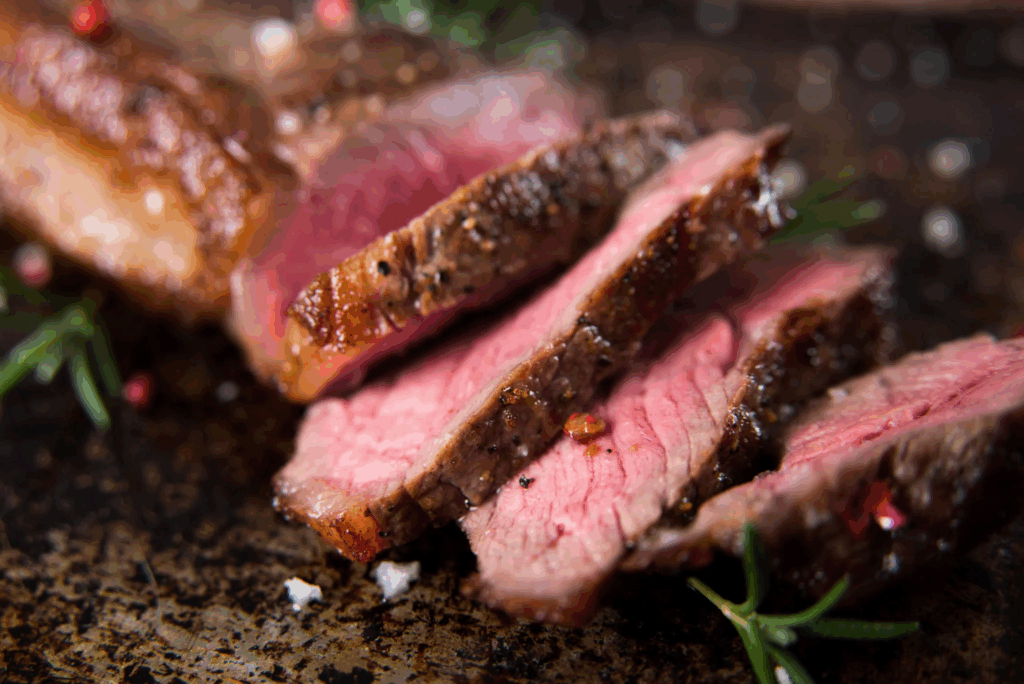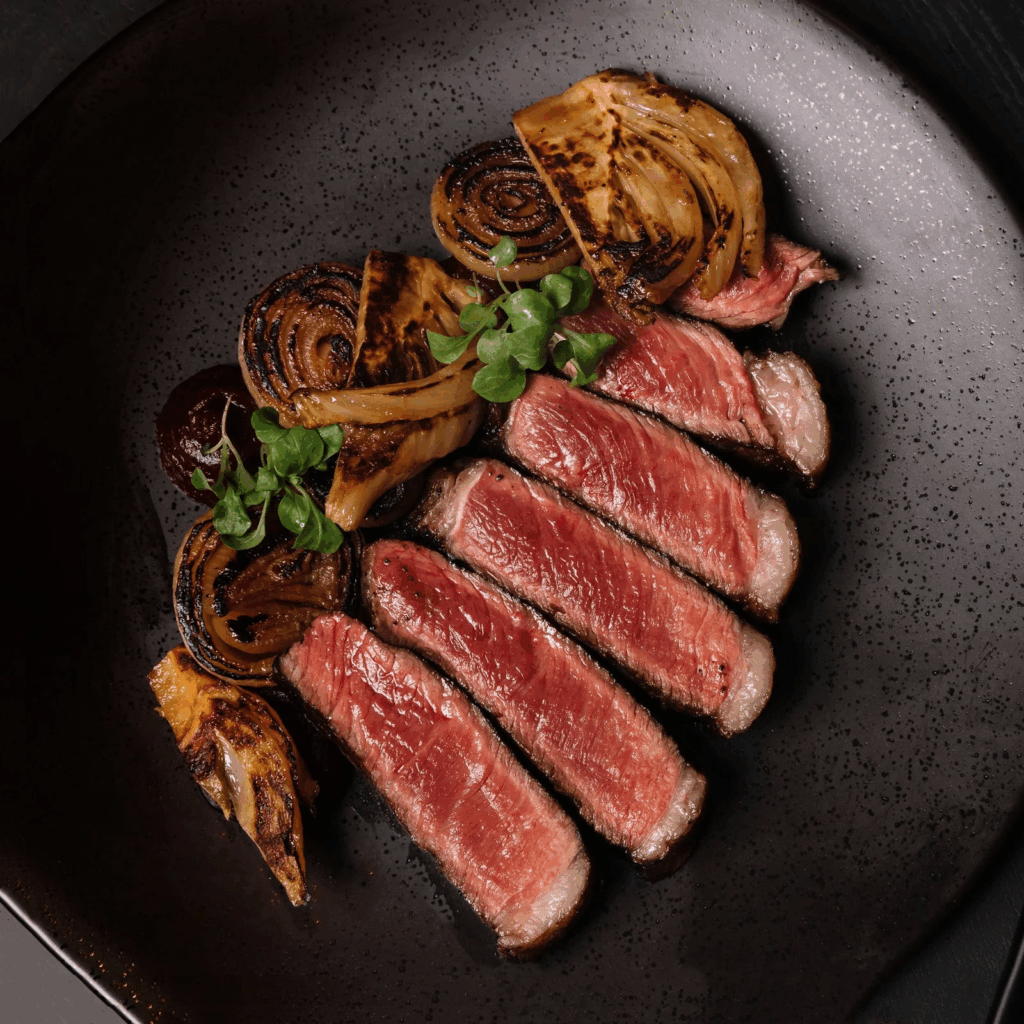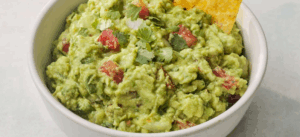How to Cook Beef Striploin Steak
How to Cook Beef Striploin Steak: Complete Guide to Flavor, Heat, and Technique

When cooked properly, striploin delivers a full beef flavor with a satisfying bite and a crust that’s easy to build in any pan or grill. It’s forgiving enough for beginners and refined enough for high-end menus. In this guide, I’ll walk you through every step of how I cook striploin steak in professional and home kitchens—from prep to temperature, skillet to sous vide. You’ll understand not just how, but why each method works.
- Why Striploin Steak Balances Flavor and Tenderness
- What Is Striploin Steak and Where It Comes From
- How to Choose Quality Striploin Steak
- Preparing Striploin Steak for Cooking
- Essential Ingredients for Cooking Striploin Steak
- Cooking Striploin Steak in a Skillet: Heat, Timing, and Finish
- Oven Method for Striploin: Sear-Then-Finish for Even Results
- Temperature and Doneness Table for Striploin Steak
- Reverse Sear for Striploin: Maximum Edge-to-Edge Control
- Sous Vide Cooking for Perfectly Even Striploin
- Microwave and Pressure Cooker Methods for Striploin
- Common Mistakes with Striploin Steak
- Best Sauces for Striploin Steak
- Ideal Seasonings for Striploin Steak
- Creative Recipes and Serving Ideas with Striploin Steak
- How to Serve and Present Striploin Like a Chef
- FAQ: 15 Questions About Cooking Striploin Steak — Answered by a Chef

Why Striploin Steak Balances Flavor and Tenderness
Striploin steak is my go-to when I want a perfect balance between flavor, tenderness, and ease of cooking. Unlike the richer, fattier ribeye or the ultra-lean filet mignon, striploin offers a middle ground that’s ideal for both everyday meals and special occasions. It has enough marbling to stay juicy but enough structure to deliver a satisfying chew. That’s why many restaurants feature it as their signature steak—classic, clean, and consistent.
What Is Striploin Steak and Where It Comes From
Striploin comes from the short loin section of the cow—located between the rib and the sirloin. This cut includes the longissimus dorsi, a muscle that doesn’t get much use, which is why it’s naturally tender. You’ll find it labeled in butcher shops under various names: New York strip, Kansas City strip, strip steak, or simply sirloin strip. Don’t confuse it with top sirloin—striploin is a superior cut with finer grain and more intramuscular fat.
One of the things I love most about striploin is the fat cap that runs along one side. When rendered correctly, it bastes the steak as it cooks and delivers incredible flavor. The steak also has a firm structure, which makes it perfect for slicing and plating. It’s a favorite for steak sandwiches, frites, and composed dishes where presentation matters.
Striploin is best served medium-rare to medium. It lacks the excess fat of ribeye that can keep it moist at higher temps, but it also holds its texture better than tenderloin. It’s a cut that responds well to heat, takes seasoning beautifully, and gives a consistently great eating experience.

How to Choose Quality Striploin Steak
At the butcher counter, I look first for even marbling—those small streaks of fat throughout the muscle. This ensures juiciness and flavor during cooking. I go for USDA Choice or Prime, if possible. Prime striploin has more consistent marbling, but a well-cut Choice steak can be just as impressive if selected carefully.
Thickness is critical. I recommend cuts that are at least 1¼ to 1½ inches thick. Anything thinner is difficult to sear properly without overcooking the inside. I also check the fat cap—it should be firm, white, and not too thick (around ¼ inch is ideal). The meat itself should have a rich, deep red hue, indicating freshness and proper aging.
If you’re deciding between grass-fed and grain-fed, both are excellent but different. Grass-fed tends to be leaner and more mineral-forward, while grain-fed is fattier and richer. I adjust seasoning and sauces accordingly: I go bolder with leaner beef and balance richer meat with acid and herbs.
When possible, I ask the butcher to cut the striploin fresh from the loin, ensuring it hasn’t oxidized or been sitting in a case for too long. It makes a noticeable difference in flavor and texture.

Preparing Striploin Steak for Cooking
The first thing I do when prepping striploin is bring it to room temperature—this usually takes 30 to 40 minutes depending on thickness. Cold meat hits the pan and seizes, cooking unevenly. A warm steak cooks predictably from edge to center.
Next, I pat it dry thoroughly with paper towels. A dry surface ensures a proper crust and prevents steaming. I then inspect the fat cap—if it’s thicker than ¼ inch, I trim it slightly but leave most of it intact. This fat adds moisture and flavor when seared.
I season with kosher salt and freshly cracked black pepper, often 30 minutes in advance. This gives the salt time to penetrate and begin forming that essential surface layer that leads to a crust. If I want extra flavor, I’ll press in a little garlic powder or crushed coriander—but I never overseason. Striploin tastes best when you let the beef speak.
I don’t oil the steak—I oil the pan. And I never marinate this cut. Acidic marinades can break down the surface and affect texture. If I want additional flavor, I use butter and aromatics like rosemary or thyme during basting.
Essential Ingredients for Cooking Striploin Steak
- 1 striploin steak (1¼ to 1½ inches thick, preferably USDA Choice or Prime)
- Kosher salt
- Freshly ground black pepper
- 1 tablespoon high-smoke-point oil (grapeseed, avocado, or canola)
- 1 tablespoon unsalted butter
- 1 sprig fresh rosemary or thyme (optional)
- 1 garlic clove, lightly crushed (optional)
- Optional: Dijon mustard, balsamic reduction, red wine for sauce
This base ingredient set gives me the flexibility to create a crust, finish with flavor, and pair with either a dry or sauced plating approach depending on the occasion.
Cooking Striploin Steak in a Skillet: Heat, Timing, and Finish
Skillet cooking is my default method when I want fast results and a deep, flavorful crust. For striploin, I use a cast-iron or heavy-bottomed stainless steel skillet, preheated over medium-high heat until shimmering hot. The surface should be hot enough to evaporate water instantly—that’s how I know it’s ready.
Once the pan is hot, I add a small amount of neutral oil and gently place the steak in the center. For a 1½-inch striploin, I sear each side for about 2½ to 3 minutes, depending on thickness. I resist the urge to move the steak—it needs uninterrupted contact with the surface to develop color and crunch.
After the first flip, I reduce the heat slightly, add a spoon of butter, garlic, and rosemary, and begin basting. I tilt the pan and spoon the sizzling butter over the steak to enrich the crust and infuse it with aromatics. I monitor temperature closely—once it hits 125°F (52°C) internally, I remove it from heat and let it rest for 10 minutes.
This method gives me a beautiful golden-brown exterior, a warm pink center, and a well-rendered fat cap. It’s my preferred technique when I’m cooking just one or two steaks.

Oven Method for Striploin: Sear-Then-Finish for Even Results
When I’m cooking thicker or multiple striploin steaks, I often rely on the sear-then-oven technique. This method starts with a hard sear in a skillet to build crust, then moves to the oven to finish gently and evenly.
I preheat the oven to 375°F (190°C) and sear the steak in a hot skillet for 2 minutes per side. Then I transfer the entire pan to the oven and continue cooking for 5 to 8 minutes, depending on thickness and desired doneness. I baste with butter or brush on a thin glaze during the last minute for added depth.
If I’m preparing a red wine or garlic glaze, I reduce the sauce separately and apply it post-cooking. This keeps sugars from burning during oven time. Once the internal temperature reaches 125°F, I rest the steak outside the oven, tented with foil, for 10 minutes.
This method is ideal when I need more control over doneness across multiple steaks or when I’m plating for a group. It ensures uniform pink throughout with no gray band and retains moisture better than skillet-only cooking.
Temperature and Doneness Table for Striploin Steak
Cooking striploin to perfection comes down to precision in temperature. Here’s the chart I use in both home and pro kitchens:
| Doneness Level | Pull Temp (°F/°C) | Rest Temp Goal | Texture & Color |
| Rare | 120°F / 49°C | 125°F / 52°C | Very soft, cool red center |
| Medium-Rare | 125°F / 52°C | 130–135°F / 54–57°C | Warm pink center, best balance of tenderness |
| Medium | 130°F / 54°C | 140°F / 60°C | Firmer, light pink center |
| Medium-Well | 138°F / 59°C | 145°F / 63°C | Mostly gray with slight pink |
| Well Done | 150°F+ / 66°C+ | 160°F+ / 71°C+ | Fully gray, dry texture |
Surface sear temp: 400–450°F (204–232°C)
Oven finish temp: 375°F (190°C)
I always use an instant-read thermometer placed into the center from the side—not top-down. This gives the most accurate internal reading and keeps overcooking to a minimum.

Reverse Sear for Striploin: Maximum Edge-to-Edge Control
Reverse searing is my favorite technique when I want total control over doneness, especially with thick striploin steaks. I start by placing the seasoned steak on a wire rack over a baking tray and roasting it at 225°F (107°C) until the internal temp hits 115°F (46°C).
From there, I rest the steak briefly while heating a skillet to high heat. I then sear each side quickly—about 60 seconds per side—to build that final crust. The contrast between the gently cooked interior and sharp sear on the outside is phenomenal.
This method creates edge-to-edge medium-rare with no gray band. It’s consistent, forgiving, and especially useful when I’m working in batch or preparing steaks in advance for service. The only extra tools needed are a thermometer and patience.
Sous Vide Cooking for Perfectly Even Striploin
Sous vide is hands-down the most precise method for striploin, especially if you want medium-rare every single time. I seal the steak with a sprig of thyme and a small cube of butter, then cook it in a 129°F (54°C) water bath for 1½ to 2 hours, depending on thickness.
After the sous vide bath, I remove the steak, pat it completely dry, and finish it in a smoking hot skillet for 30–45 seconds per side. The high heat creates the sear, while the sous vide guarantees perfect internal doneness.
This method is especially valuable when preparing multiple steaks at once, or when you need precise results for plating. I use it in catering, dinner parties, and anytime I don’t want to worry about overcooking. It’s foolproof, but the sear must be fast and hot to avoid drying out the outer layer.
Microwave and Pressure Cooker Methods for Striploin
While striploin deserves classic cooking techniques, I’ve experimented with nontraditional methods when space, time, or tools were limited. The microwave, for instance, is not ideal for cooking raw steak, but it can be used to gently reheat previously cooked striploin. I wrap the steak in a damp paper towel and use 50% power in 20-second intervals, flipping once, until warmed through. It won’t restore the crust, but it preserves moisture better than full power.
As for the pressure cooker, it’s not built for steak like striploin unless your goal is to braise or shred it for tacos or rice bowls. The pressure and moisture break down the fibers quickly, which removes the structure that makes striploin appealing. That said, I’ve tested it once with a thick striploin in broth and aromatics, cooked for 5–6 minutes at high pressure, then seared it after. It was tender and flavorful—but the texture was closer to pot roast than steak.
If you’re in a rush and have no access to stove or oven, use these methods cautiously and pair with a bold sauce to mask the lack of crust and contrast.
Common Mistakes with Striploin Steak
Even skilled home cooks sometimes make avoidable errors with striploin. The most common issue I’ve seen is overcooking—especially in thinner steaks. Without enough marbling to protect against heat, striploin dries out past medium. That’s why I strongly recommend using a meat thermometer. Even after hundreds of steaks, I still rely on one.
Another frequent problem is starting with cold meat. When steak goes directly from fridge to pan, the exterior finishes cooking before the center has even warmed. I always let my striploin sit out for 30–45 minutes to temper before cooking.
I also see people neglecting the fat cap. Leaving it unrendered leads to chewy bites, while over-trimming eliminates one of the best parts. I score it lightly and sear it fat-side down to get it golden and crisp.
Finally, resting is often skipped, and that’s a huge mistake. If you slice too early, the juices bleed out onto the board instead of staying in the meat. I always rest striploin for 8–10 minutes minimum—it makes a night-and-day difference in juiciness.
Best Sauces for Striploin Steak
Striploin is incredibly flavorful on its own, but the right sauce can enhance its depth. One of my go-to classics is a red wine reduction, made by deglazing the pan with wine, reducing with beef stock and shallots, and finishing with cold butter. It’s bold and elegant.
When I want something peppery and creamy, I whip up a green peppercorn sauce using brandy, cream, and cracked pepper. It pairs especially well with grilled or broiled striploin, adding warmth without overshadowing the beef.
Another favorite is herb compound butter—garlic, parsley, lemon zest, and soft butter, chilled and sliced on top of the resting steak. It melts into the crevices and adds shine and aroma in a way no sauce can.
For grilled striploin, I love a chimichurri or salsa verde—both add acidity and herbaceous lift that cuts through the fat and balances the steak beautifully. I avoid heavy barbecue sauces, which tend to mask the striploin’s delicate richness.
Ideal Seasonings for Striploin Steak
Striploin steak doesn’t need much—but what it does need, it needs done right. I almost always season it with just kosher salt and freshly cracked pepper, allowing the beef’s natural richness to dominate.
That said, when I want to build a deeper crust or support a bolder flavor, I add garlic powder, smoked paprika, or ground coriander into the mix. These spices toast beautifully on high heat and don’t overpower the steak when used sparingly.
When I’m grilling or reverse searing, I sometimes brush the steak with a light coating of Dijon mustard before seasoning. It helps build an intense crust and adds subtle tang that pairs well with both butter and sauce finishes.
I avoid marinades for this cut unless I’m dealing with leaner or lower-grade beef. And even then, I limit it to 15–20 minutes with oil, soy sauce, and herbs—any longer and the muscle starts breaking down and losing texture.
Creative Recipes and Serving Ideas with Striploin Steak
Striploin is more versatile than people think. I’ve served it as the star of the plate, but I’ve also sliced it for steak sandwiches with caramelized onions, aioli, and crusty sourdough. When cold, it’s amazing thinly sliced over salads or in steak-and-egg brunch plates.
Another favorite of mine is striploin steak frites: crispy shoestring potatoes alongside a sliced medium-rare striploin, finished with béarnaise or garlic butter. It’s bistro-style perfection.
For grain bowls or weekday dinners, I slice the steak thin and serve it over quinoa or farro with roasted vegetables and a light vinaigrette. It’s healthy but satisfying.
Even tacos work—especially with citrusy slaw, chili oil, and avocado crema. Striploin’s firmness holds up well in tacos without falling apart. The key is always slicing against the grain for tenderness, whether it’s hot or cold.
How to Serve and Present Striploin Like a Chef
Presentation begins before the steak hits the plate. After resting, I always inspect the grain direction and slice against the grain at a slight angle. This shortens the muscle fibers and delivers a tender bite, even in leaner sections of the steak. I use a long, sharp slicing knife and make confident, single-motion cuts to avoid tearing the meat.
For whole striploin service, I like to plate it over a smooth purée—like parsnip, celery root, or garlic mash—so that the steak sits with visual contrast. I drizzle a reduction or place a pat of compound butter off-center, allowing the crust to remain dry and crisp.
When plating sliced striploin, I fan the slices slightly, overlapping them just enough to show off the pink center. I’ll scatter a few roasted shallots or dot the plate with a bright chimichurri to add acidity and freshness. A final touch of flaky sea salt or lemon zest brings the whole dish to life.
I pair it with crisp, green vegetables, charred onions, or textural contrast like pommes Anna or duck fat potatoes. Striploin shines when accompanied by balance, not competition. Let the beef lead.
FAQ: 15 Questions About Cooking Striploin Steak — Answered by a Chef
What’s the ideal doneness for striploin?
I always recommend medium-rare. At 130–135°F (54–57°C), the steak is juicy with a warm pink center and enough structure to enjoy each bite. I’ve found that going past 140°F dries it out quickly.
Should I remove the fat cap before cooking?
No. I keep it on, score it lightly, and sear it fat-side down. This renders the fat and adds flavor. If you dislike eating the fat, trim it after cooking—not before.
How long should I rest striploin steak?
A minimum of 8 to 10 minutes. I let thicker steaks rest even longer. This allows juices to redistribute, resulting in a more tender and moist final product.
Can I cook striploin from frozen?
Yes, but with care. I recommend the reverse sear method: cook low and slow from frozen in the oven, then sear at the end. It works, but takes longer and needs precision.
What oil should I use for cooking striploin?
Use a high smoke point oil like grapeseed, avocado, or refined canola. Butter should be added later for basting, not searing—it burns too fast.
Do I need to use a thermometer every time?
Absolutely. Even after 15 years in professional kitchens, I still use one. Striploin is leaner than ribeye and less forgiving—you need accuracy to hit that perfect medium-rare.
Is sous vide worth it for striploin?
I’ve tried it many times and absolutely recommend it. The control is unbeatable. Just make sure to sear hard and fast afterward to rebuild the crust.
Can I marinate striploin?
It’s not necessary if the beef quality is high. But if I’m working with a budget cut or lean striploin, I’ll use a short 15-minute marinade with herbs, oil, and a splash of vinegar or soy.
Why did my steak come out gray?
Usually it’s because the pan wasn’t hot enough, or the meat was too wet. Pat the surface dry, use high heat, and don’t crowd the pan.
What sides go best with striploin?
I love pairing it with roasted root vegetables, herbed potatoes, or anything with acidity—like a simple tomato salad or lemony greens. Creamed spinach and grilled mushrooms also work beautifully.
What’s the difference between striploin and sirloin?
Striploin is more tender and more marbled. Sirloin is leaner and has a coarser texture. Striploin comes from the short loin, sirloin from the rear.
Can I cook striploin in the oven without searing first?
You can, but it won’t have the same flavor or texture. If you do, finish it with a broil or high-heat pan sear at the end to build the crust.
What’s the best way to reheat leftover striploin?
Gently in a skillet with a splash of broth or oil, covered, over low heat. I avoid the microwave unless it’s thinly sliced. It’s better to undercook slightly the first time if you plan to reheat.
How do I make a crust like in a steakhouse?
Start with a dry steak, season generously, and use a cast-iron skillet over high heat. Don’t flip too early—let it sear undisturbed. Crust comes from time and direct heat, not moving the steak.
What’s your personal favorite way to cook striploin?
Reverse sear. I roast it low and slow, then sear hard in cast iron with rosemary and butter. Served with crispy potatoes and red wine sauce—it’s a plate I’d proudly serve in any dining room.




Post Comment